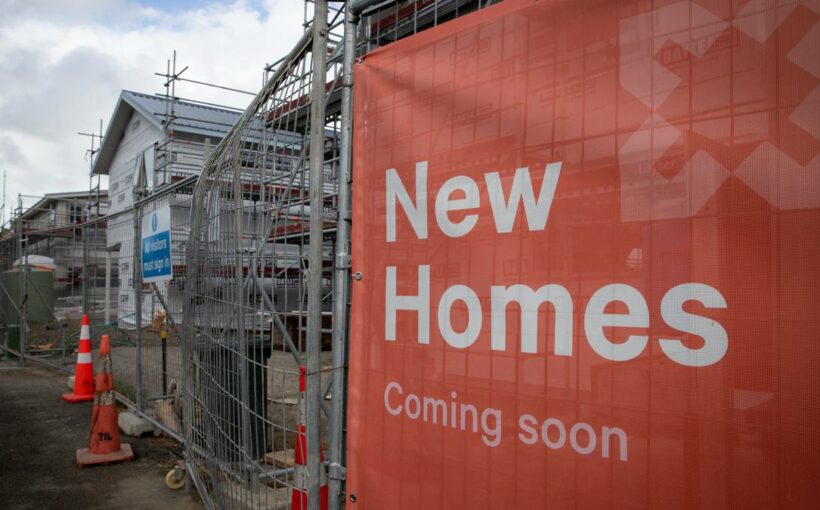In a week when the odds had already shifted to an August hike for the official cash rate, today’s Consumer’s Price Index (CPI) appears to have sealed the deal.
The CPI increase for the year to June came in at 3.3 per cent, ahead of the market expectation of 2.7 per cent.
“Today’s data practically cements it – rate hikes are needed,” said ANZ senior economist Miles Workman.
“When we cut through the considerable noise in the data, it’s clear that inflation momentum is building rapidly.”
The extremely tight labour market and signs that firms were starting to pass on costsmeant that the RBNZ couldn’tafford to wait much longer.
“These factors will only help inflation snowball from here,” he said.
Westpac chief economist Michael Gordon said he expected inflation to linger above the RBNZ’s 1 to 3 per cent target band for the remainder of this year and the early part of 2022.
“While we do expect that inflation will moderate further ahead as supply constraints ease, the current strength in inflation is likely to see inflation expectations pushing to levels above the RBNZ’s 2 per cent target,” he said.
KiwiBank chief economist Jarrod Kerr had been one the most aggressive with his inflation forecasts – tipping a 3 per cent rise.
He followed the other major banks in shifting his expectations to an August hike, which he expects will be the first of three increases.
“We’re likely to see two hikes by year-end, and a push to 1 per cent by February,” he said.
“Beyond 1 per cent will depend on the interest rate sensitivity of the economy coming off record low rates.”
In other words, it has been so long since rates were hiked that it is hard to be sure how dramatically they will affect consumer behaviour.
“We have pencilled in another lift in the cash rate to 1.5 per cent, but [that’s] likely to be all we see in the near-to-medium term. An earlier liftoff from the RBNZ will (hopefully) mean less work will need to be done to restrain the economy in the future”.
At 3.3 per cent, the annual CPI inflation number was the highest since the John Key Government’s GST hikes a decade ago.
Annual inflation had peaked at 5.3 per cent in June 2011, but that was heavily influenced by a GST increase of 2.5 percentage points which came into effect in October 2010.
Tax hikes aside, the inflation rate reached 5.1 per cent in the September 2008 quarter, during the time of the global financial crisis.
Part of the annual increase was due to the fact that it was measured against the June 2020 quarter, a period impacted by the hard lockdown, when some prices fell.
“A year ago, in the June 2020 quarter, we saw lower petrol prices, as well as measures put in place during the Covid-19 lockdown such as cheaper public transport, which resulted in lower consumer prices that quarter,” said Stats NZ prices senior manager Aaron Beck.
“This magnified the overall increase somewhat.”
But quarterly inflation was 1.3 per cent, also the highest in over a decade.
The breakdown of price rises by sector highlighted some of the challenges for the economy in the coming months.
The cost of building a new house was the biggest contributor to both annual and quarterly inflation this quarter, up 7.4 per cent for the year and 4.6 per cent for the quarter.
“Higher prices for building houses reflect both supply-chain problems and high demand,” Beck said.
“Several construction firms have told us that it is hard to get many of the materials they need to build a house, and that there are higher labour and administration costs.
“In addition, in the year to May 2021, $18.3 billion of residential building work was consented, up 18 per cent on a year earlier.”
Beyond that, the data also showed petrol prices had rebounded – up 16 per cent between the June 2020 and June 2021 quarters.
The weighted average price of a litre of 91 octane was $2.13 in the June 2021 quarter, up from $2.00 in the March 2021 quarter.
By the end of the quarter, prices were about 2.6 per cent higher than the average over the quarter.
“Global crude prices fell sharply over the first four months of 2020, due to Covid-19 uncertainty, which drove down prices at the petrol pump in early 2020,” Beck said.
Overall, annual transport prices increased 9.4 per cent, due to higher prices for used cars and international airfares, as well as petrol.
The extent to which inflation will stick around once pandemic challenges abate is the big question dividing economists, and the biggest challenge for central banks around the world.
“Stepping back for perspective, we get the clear impression that it’s still relatively early days in the rise in New Zealand’s inflation – only part of which is transitory,” said BNZ head of research Stephen Toplis.
“News over coming quarters of still-rising annual inflation promises to stoke an inflation psychology – one which is already bubbling up in some surveys.”
That would likely lead to a rise in wage claims.
There was already talk of pay jumps occurring to attract and retain staff, he said.
“The RBNZ will have a job on its hands controlling inflation, not just from a psychological perspective, but from a fundamental basis, with evidence the economy is fast barrelling into a state of excess demand”.
Source: Read Full Article
